On (α,β)-US Sets in BCK/BCI-Algebras
Abstract
1. Introduction
2. BCK/BCI-Algebras and Soft Sets
- and imply .
- ,
- .
- .
- .
- (i)
- , .
- (ii)
- , .
- (iii)
- , .
- (iv)
- , , where is an empty set.
- (1)
- (2)
- .
- (1)
- (2)
3. -US Sets
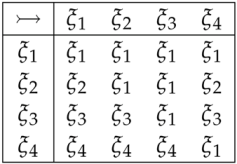
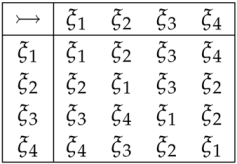
4. -US Subalgebras in BCK/BCI-Algebras
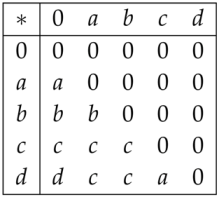
5. -US Ideals in BCK/BCI-Algebras
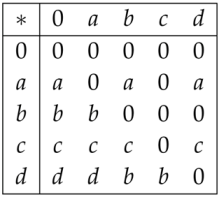
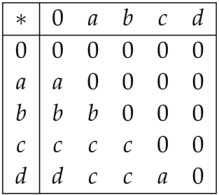
- (1)
- (2)
- .
- (1)
- .
- (2)
- .
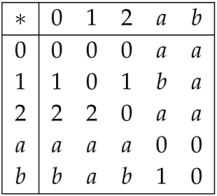
6. -US Commutative Ideals in BCK/BCI-Algebras
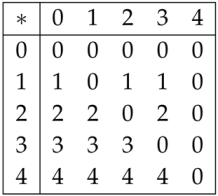
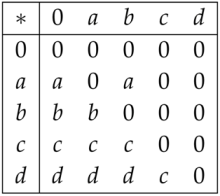
- (1)
- for all ;
- (2)
- is an -US ideal over U;
- (i)
- ,
- (ii)
- is an -US ideal over U.
7. Conclusions
Author Contributions
Funding
Conflicts of Interest
References
- Zadeh, L.A. Fuzzy sets. Inform. Control 1965, 8, 338–353. [Google Scholar]
- Pawlak, Z. Rough sets. Int. J. Inf. Comput. Sci. 1982, 11, 341–356. [Google Scholar] [CrossRef]
- Atanassov, K.T. Intuitionistic fuzzy sets. Fuzzy Sets Syst. 1986, 20, 87–96. [Google Scholar] [CrossRef]
- Gau, W.L.; Buehrer, D.J. Vague sets. IEEE Trans. Syst. Man Cybern. 1993, 23, 610–614. [Google Scholar] [CrossRef]
- Gorzalzany, M.B. A method of inference in approximate reasoning based on interval-valued fuzzy sets. Fuzzy Sets Syst. 1987, 21, 1–17. [Google Scholar] [CrossRef]
- Molodtsov, D. Soft set theory-First results. Comput. Math. Appl. 1999, 37, 19–31. [Google Scholar] [CrossRef]
- Maji, P.K.; Biswas, R.; Roy, A.R. Soft set theory. Comput. Math. Appl. 2003, 45, 555–562. [Google Scholar] [CrossRef]
- Aktas, H.; Çagman, N. Soft sets and soft groups. Inform. Sci. 2007, 177, 2726–2735. [Google Scholar] [CrossRef]
- Acar, U.; Koyuncu, F.; Tanay, B. Soft sets and soft rings. Comput. Math. Appl. 2010, 59, 3458–3463. [Google Scholar]
- Ali, M.I.; Feng, F.; Liu, X.; Min, W.K.; Shabir, M. On some new operationsin in soft set theory. Comput. Math. Appl. 2009, 57, 1547–1553. [Google Scholar]
- Çagman, N.; Citak, F.; Aktas, H. Soft-int group and its applications to group theory. Neural Comput. Appl. 2012, 21, 151–158. [Google Scholar] [CrossRef]
- Feng, F.; Jun, Y.B.; Zhao, X. Soft semirings. Comput. Math. Appl. 2008, 56, 2621–2628. [Google Scholar]
- Sezgin, A.; Atagun, A.O.; Çagman, N. Soft intersection near-rings with its applications. Neural Comput. Appl. 2012, 21, 221–229. [Google Scholar]
- Çagman, N.; Enginoglu, S. Soft set theory and uni-int decision making. Eur. J. Oper. Res. 2010, 207, 848–855. [Google Scholar] [CrossRef]
- Feng, F.; Jun, Y.B.; Liu, X.; Li, L. An adjustable approach to fuzzy soft set based decision-making. J. Comput. Appl. Math. 2010, 234, 10–20. [Google Scholar] [CrossRef]
- Jana, C.; Pal, M. A robust single-valued neutrosophic soft aggregation operators in multi-criteria decision making. Symmetry 2019, 11, 110. [Google Scholar] [CrossRef]
- Maji, P.K.; Roy, A.R.; Biswas, R. An application of soft sets in a decision making problem. Comput. Math. Appl. 2002, 44, 1077–1083. [Google Scholar] [CrossRef]
- Ma, X.; Zhan, J.; Ali, M.I.; Mehmood, N. A survey of decision making methods based on two classes of hybrid soft set models. Artif. Intell. Rev. 2018, 49, 511–529. [Google Scholar] [CrossRef]
- Zhan, J.; Sun, B.; Alcantud, J.C.R. Covering based multigranulation (I,T)-fuzzy rough set models and applications in multi-attribute group decision-making. Inform. Sci. 2019, 476, 290–318. [Google Scholar] [CrossRef]
- Zou, Y.Z.; Xiao, Z. Data analysis approaches of soft sets under incomplete information. Knowl.-Based Syst. 2008, 21, 941–945. [Google Scholar] [CrossRef]
- Zhan, J.; Wang, Q. Certain types of soft coverings based rough sets with applications. Int. J. Mach. Learn. Cybern. 2018. [Google Scholar] [CrossRef]
- Zhang, L.; Zhan, J.; Xu, Z.X. Covering-based generalized IF rough sets with applications to multi-attribute decision-making. Inform. Sci. 2019, 478, 275–302. [Google Scholar]
- Zhang, L.; Zhan, J. Fuzzy soft β-covering based fuzzy rough sets and corresponding decision-making applications. Int. J. Mach. Learn. Cybern. 2018. [Google Scholar] [CrossRef]
- Zhan, J.; Dudek, W.A.; Neggers, J. A new soft union set: characterizations of hemirings. Int. J. Mach. Learn. Cybern. 2017, 8, 525–535. [Google Scholar]
- Zhan, J.; Çaǧman, N.; Sezer, A.S. Applications of soft union sets to hemirings via SU-h-ideals. J. Int. Fuzzy Syst. 2014, 26, 1363–1370. [Google Scholar]
- Zhan, J.; Yu, B. Characterizations of Hemirings via (M,N)-SI-h-bi-ideals and (M,N)-SI-h-quasi-ideals. J. Mult.-Valued Log. Soft Comput. 2016, 26, 363–388. [Google Scholar]
- Imai, Y.; Iśeki, K. On axiom system of propositional calculi. XIV Proc. Jpn. Acad. 1966, 42, 19–22. [Google Scholar] [CrossRef]
- Iśseki, K. An algebra related with a propositional calculus. XIV Proc. Jpn. Acad. 1966, 42, 26–29. [Google Scholar] [CrossRef]
- Jana, C.; Senapati, T.; Pal, M. (∈,∈∨q)-intuitionistic fuzzy BCI-subalgebras of BCI-algebra. J. Int. Fuzzy Syst. 2016, 31, 613–621. [Google Scholar]
- Jana, C.; Pal, M.; Saied, A.B. (∈,∈∨q)-bipolar fuzzy BCK/BCI-algebras. Mol. J. Math. Sci. 2017, 29, 139–160. [Google Scholar]
- Jana, C.; Pal, M. On (∈α,∈α∨qβ)-fuzzy soft BCI-algebras. Mol. J. Math. Sci. 2017, 29, 197–215. [Google Scholar]
- Ma, X.; Zhan, J.; Jun, Y.B. Some types of (∈,∈∨q) interval valued fuzzy ideals of BCI-algebras. Iran. J. Fuzzy Syst. 2009, 6, 53–63. [Google Scholar]
- Ma, X.; Zhan, J.; Jun, Y.B. Some kinds of (∈γ,∈γ∨qδ)-fuzzy ideals of BCI-algebras. Comput. Math. Appl. 2011, 61, 1005–1015. [Google Scholar] [CrossRef]
- Ma, X.; Zhan, J.; Jun, Y.B. New types of fuzzy ideals of BCI-algebras. Neural Comput. Appl. 2012, 21, S19–S27. [Google Scholar] [CrossRef]
- Senapati, T.; Jana, C.; Pal, M.; Jun, Y.B. Cubic Intuitionistic q-Ideals of BCI-Algebras. Symmetry 2018, 10, 752. [Google Scholar] [CrossRef]
- Senapati, T.; Bhowmik, M.; Pal, M.; Davvaz, B. Fuzzy translations of fuzzy H-ideals in BCK/BCI-algebra. J. Indones. Math. Soc. 2015, 21, 45–58. [Google Scholar] [CrossRef]
- Jun, Y.B. Soft BCK/BCI-algebra. Comput. Math. Appl. 2008, 56, 1408–1413. [Google Scholar] [CrossRef]
- Jun, Y.B.; Park, C.H. Applications of soft sets in ideal theory of BCK/BCI-algebra. Inform. Sci. 2008, 178, 2466–2475. [Google Scholar] [CrossRef]
- Jun, Y.B.; Lee, K.J.; Zhan, J. Soft p-ideals of soft BCI-algebras. Comput. Math. Appl. 2009, 58, 2060–2068. [Google Scholar] [CrossRef]
- Acar, U.; Özürk, Y. Maximal, irreducible and prime soft ideals of BCK/BCI-algebras. Hacet. J. Math. Stat. 2015, 44, 1–13. [Google Scholar] [CrossRef]
- Jun, Y.B. On (α,β)-fuzzy subalgebras of BCK/BCI-algebras. Bull. Korean Math. Soc. 2005, 42, 703–711. [Google Scholar] [CrossRef]
- Jun, Y.B. Uion-soft sets with applications in BCK/BCI-algebras. Bull. Korean Math. Soc. 2013, 50, 1937–1956. [Google Scholar]
- Sezgin, A. Soft union interior ideals, quasi-ideals and generalized Bi-ideals of rings. Filomat 2018, 32, 1–28. [Google Scholar]
- Sezgin, A.; Çagman, N.; Atagün, A.O. A completely new view to soft intersection rings via soft uni-intproduct. Appl. Soft Comput. 2017, 54, 366–392. [Google Scholar]
- Jana, C.; Pal, M. Applications of new soft intersection set on groups. Ann. Fuzzy Math. Inform. 2016, 11, 923–944. [Google Scholar]
- Jana, C.; Pal, M. Applications of (α,β)-soft intersectional sets on BCK/BCI-algebras. Int. J. Intell. Syst. Technol. Appl. 2017, 16, 269–288. [Google Scholar] [CrossRef]
- Jana, C.; Pal, M.; Karaaslan, F.; Sezgin, A. (α,β)-soft intersectional rings and ideals with their applications. New Math. Nat. Comput. 2018. [Google Scholar] [CrossRef]
- Ma, X.; Zhan, J. Applications of a new soft set to h-hemiregular hemirings via (M,N)-SI-h-ideals. J. Int. Fuzzy Syst. 2014, 26, 2515–2525. [Google Scholar]
- Huang, Y. BCI-Algebra; Science Press: Beijing, China, 2006. [Google Scholar]
- Meng, J.; Wei, S.M. Periods of elements in BCI-algebras. Math. Jpn. 1993, 38, 427–431. [Google Scholar]
- Zhan, J.; Xu, W. Two types of coverings based multigranulation rough fuzzy sets and applications to decision making. Artif. Intell. Rev. 2018. [Google Scholar] [CrossRef]
- Jiang, H.; Zhan, J.; Chen, D. Covering based variable precision (I,T)-fuzzy rough sets with applications to multi-attribute decision-making. IEEE Trans. Fuzzy Syst. 2018. [Google Scholar] [CrossRef]
- Zhang, L.; Zhan, J. Novel classes of fuzzy soft β-coverings-based fuzzy rough sets with applications to multi-criteria fuzzy group decision making. Soft Comput. 2018. [Google Scholar] [CrossRef]
© 2019 by the authors. Licensee MDPI, Basel, Switzerland. This article is an open access article distributed under the terms and conditions of the Creative Commons Attribution (CC BY) license (http://creativecommons.org/licenses/by/4.0/).
Share and Cite
Jana, C.; Pal, M. On (α,β)-US Sets in BCK/BCI-Algebras. Mathematics 2019, 7, 252. https://doi.org/10.3390/math7030252
Jana C, Pal M. On (α,β)-US Sets in BCK/BCI-Algebras. Mathematics. 2019; 7(3):252. https://doi.org/10.3390/math7030252
Chicago/Turabian StyleJana, Chiranjibe, and Madhumangal Pal. 2019. "On (α,β)-US Sets in BCK/BCI-Algebras" Mathematics 7, no. 3: 252. https://doi.org/10.3390/math7030252
APA StyleJana, C., & Pal, M. (2019). On (α,β)-US Sets in BCK/BCI-Algebras. Mathematics, 7(3), 252. https://doi.org/10.3390/math7030252




